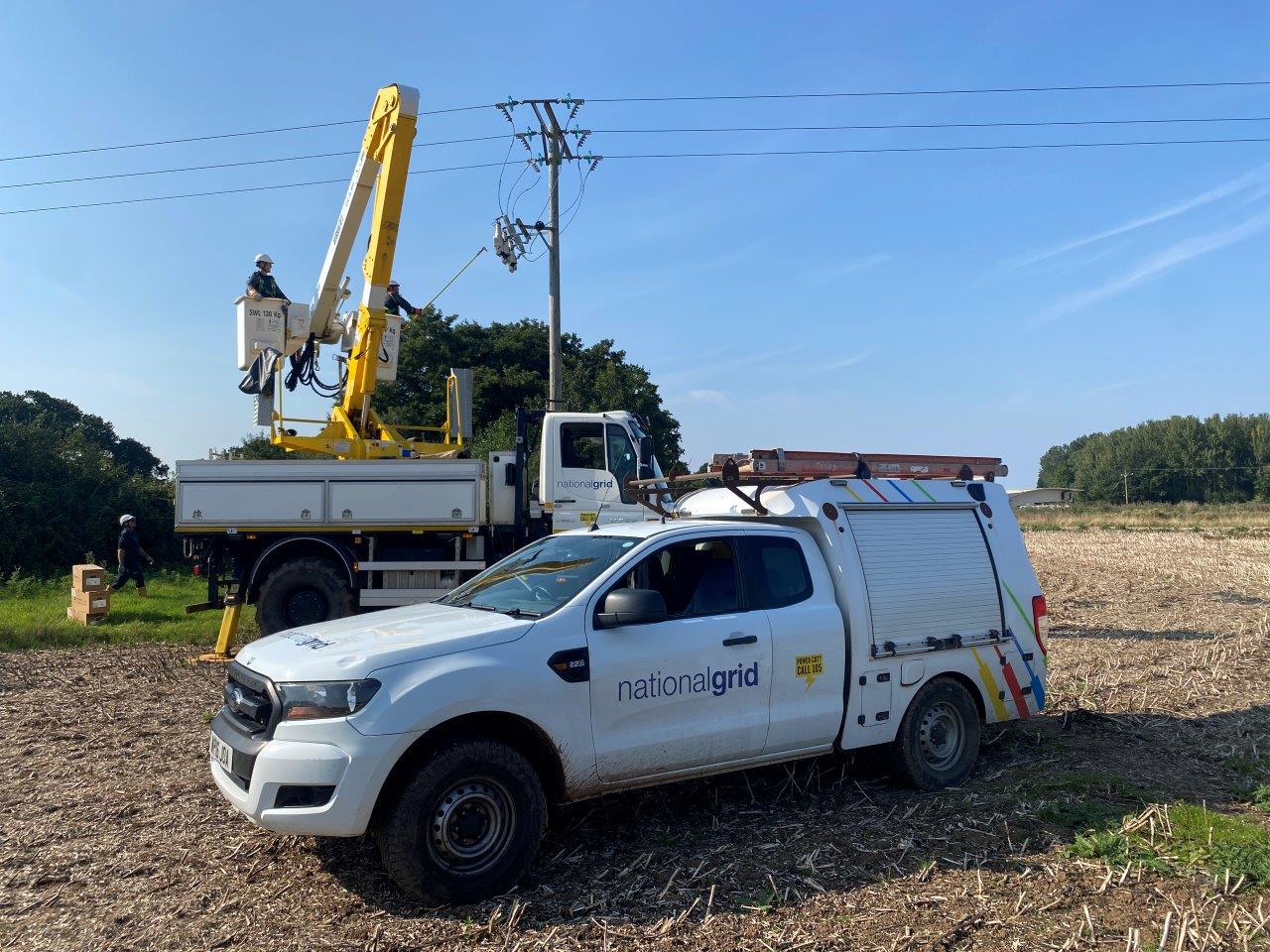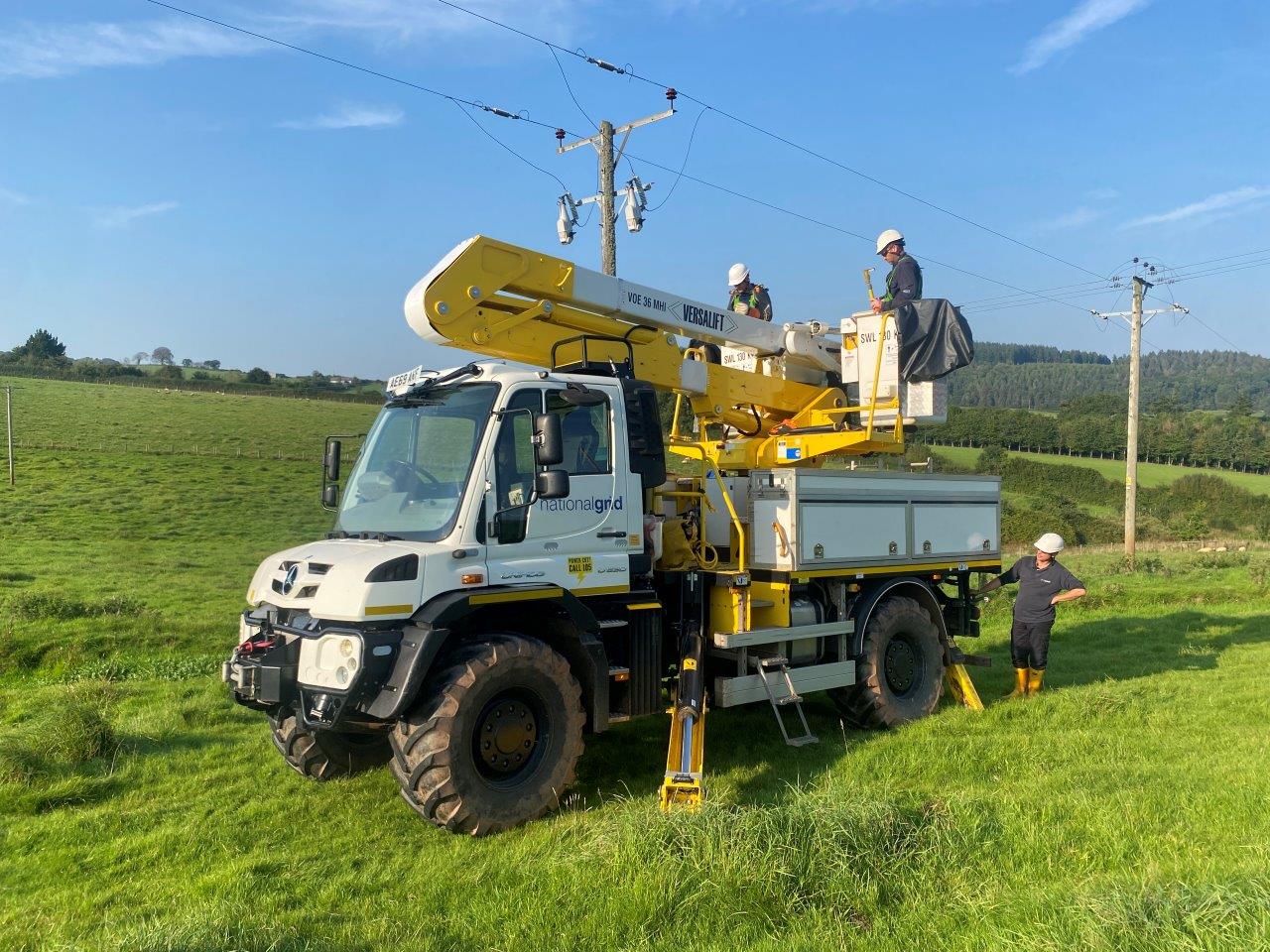National Grid Improves Resilience and Reduces Outages with Spur Recloser Strategy
CASE STUDY
S&C Featured Solution: TripSaver® II Cutout-Mounted Recloser
Location: United Kingdom
In Brief
- National Grid trialed 27 TripSaver II reclosers for 19 months.
- The devices cleared 25 temporary faults, avoiding outages and site visits.
- The utility realised £300,000 (US$380,000) from regulatory incentives and O&M savings.
- Avoided truck rolls led to approximately 205 kilograms (450 pounds) of carbon emissions saved.
- Based on their net benefits, TripSaver II reclosers demonstrated a payback period of less than 6 months.
Customer Challenge
National Grid Electricity Distribution is one of the United Kingdom’s largest electricity distribution networks, serving nearly 8 million customers in the West and East Midlands, the South West, and Wales.
Due to the rural nature of its customer base, National Grid’s electrical grid was experiencing a significant number of temporary faults along its lengthy feeder and spur lines. Outages along those lateral lines were becoming a regular nuisance because the region often experiences faults caused by vegetation, wind, and birds, all leading to power interruptions for the company’s customers.
When temporary faults occurred, they often created permanent outages that forced National Grid to dispatch a repair crew meaning:
- hours of work to replace fuses
- increased operation and maintenance (O&M) costs
- negative impacts on reliability metrics and customer satisfaction

An Incentive-Based Regulatory Framework
To solve such challenges facing British electricity distribution utilities, British regulator Ofgem implemented the RIIO (Revenue = Innovation + Incentives + Outputs) incentive framework targeting performance improvements in a range of areas including reliability and resilience. The RIIO framework motivates utilities to create long-term solutions by rewarding them with increased revenue for exceeding targets or penalising them for failing to meet targets.
To maximise the benefits of the incentive framework, National Grid chose to concentrate on improving reliability by reducing customer interruptions (CI) and customer minutes lost (CML).
After the targets were set, National Grid developed a business plan aimed at meeting its performance-based goals, including boosting customer satisfaction and improving overall grid reliability. Accomplishing these critical goals meant the utility needed help to address permanent outages caused by temporary faults along its spur lines.
Working closely with S&C on this trial has demonstrated significant improvements to not only network reliability but also customer satisfaction. We look forward to expanding these great results from S&C solutions across our distribution network.
S&C Solution
Through its long-term and trusted relationship, National Grid turned to S&C for its innovative solutions. To help reduce unnecessary outages, S&C suggested using its spur protection solution, the TripSaver II Cutout-Mounted Recloser, to meet the utility’s ambitious goals.
With up to 80% of overhead distribution faults being temporary, the single-phase TripSaver II recloser helps prevent such faults from becoming permanent outages. The recloser accomplishes this by testing the line when fault current is detected and closing back in if the source of the problem is temporary.
This drastically reduces CIs and CMLs on spurs, trims O&M costs by preventing costly site visits, and most importantly, keeps customers’ power on. For households experiencing multiple outages throughout the year, this would be a transformational outcome.

National Grid was also interested in the TripSaver II recloser because it:
- coordinates with other smart devices
- implements a four-shot design that tests the line for fault current four times, allowing more time for temporary causes to be resolved
- offers access to real-world data
- can be configured with time-current characteristic curves before delivery
- is easy for crews to install
- can be used as a direct replacement for Automatic Sectionalising Links (ASLs) with the option of using more advanced functionality
Piloting the TripSaver II Recloser
National Grid proceeded with a pilot of 27 TripSaver II reclosers in 10 separate South-West England locations that provide electricity to 917 customers.
The utility chose these locations because they represented a mix of spur lines that historically had experienced a large number of temporary faults in addition to more average-performing spurs.
S&C supported the pilot in a variety of ways, including helping National Grid receive buy-in at each utility decision-making level. S&C accomplished this by holding demonstrations on how the TripSaver II recloser works, hosting Q&A sessions and bi-monthly online trainings, and creating FAQ documents and help cards for engineers. For the selected 10 locations, S&C travelled to every trial site to individually train each regional line-crew member.
Results
National Grid experienced immediate results, and the TripSaver II recloser pilot verified the device’s ability to mitigate the impact of temporary faults.
Throughout a 19-month period, the TripSaver II reclosers consistently prevented outages, significantly reduced National Grid’s operating costs, and positively impacted customer reliability.
In total, the 27 TripSaver II reclosers:
- cleared 25 temporary faults that previously would have become permanent outages, reducing the number of customers directly impacted by faults
- achieved £300,000 (US$380,000) in net benefits from reliability incentives and avoided O&M expenses
- eliminated approximately 205 kilograms (450 pounds) of carbon emissions by avoiding approximately 662 miles of travel from unnecessary site visits
Based on reliability incentive rates set by Ofgem for reductions in CIs, CMLs, and avoided site visits, TripSaver II reclosers demonstrated an average payback period of less than 6 months.
Driven by these results, National Grid plans to install more TripSaver II reclosers across its network.
Fecha de Publicación
junio 6, 2022
